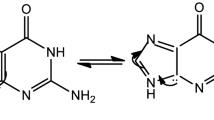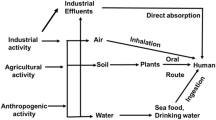Abstract
The mechanism for the decrease in the accumulation of cadmium (Cd) in Cd-resistant Chinese hamster V79 (Cdr) cells in culture was investigated in a comparison with Cd-sensitive (Cds) cells. Both Cdr and Cds cells took up Cd in a time-dependent manner but the rate of uptake of Cd by Cdr cells was about 15% of that by Cds cells. Kinetic studies of the uptake of Cd showed that the Vmax values for Cdr and Cds cells were 0.31 and 0.46 pmol Cd/h per mg protein, respectively. The Km values were 31.95 μM for Cdr cells and 3.15 μM for Cds cells. Mersalyl acid, a sulfhydryl (SH) blocker to which cells are impermeable, inhibited the uptake of Cd by Cds cells at subtoxic concentrations while Cdr cells were insensitive to inhibition by mersalyl acid, suggesting that SH groups in the plasma membrane play a role in the uptake of Cd. Uptake of Cd by Cds cells was dependent on the pH of the incubation medium and the rate of uptake was very high at pH 7.4 and pH 8.0 relative to the rates at pH 6.0 and pH 6.8. By contrast, the uptake of Cd by Cdr cells was lower at all pH values than that by Cds cells. The decrease in the rate of uptake of Cd by Cdr cells could not be ascribed to an increase in the efflux of Cd. A Cd-blotting technique was used to detect plasma membrane proteins with high affinity for Cd. Two major differences in terms of Cd-binding proteins (Cd-BPs) were observed between Cdr and Cds cells. A 110-kDa Cd-BP, detected in Cds cells, was found at a reduced level in Cdr cells, while an 82-kDa Cd-BP, which was not observed in Cds cells, was detected in Cdr cells.
Similar content being viewed by others
References
Ahlers J, Rösick E (1986) Cadmium-uptake and influence on plasma membrane fractions of yeast. Toxic Environ Chem 11: 291–300
Alam J, Shibahara S, Smith A (1989) Transcriptional activation of the heme oxygenase gene by heme and cadmium in mouse hepatoma cells. J Biol Chem 264: 6371–6375
Aoki Y, Kunimoto M, Shibata Y, Suzuki KT (1986) Detection of metallothionein on nitrocellulose membrane using western blotting technique and its application to identification of cadmium-binding proteins. Anal Biochem 157: 117–122
Chakravarthy BR, Spence MW, Clarke JTR, Cook HW (1985) Rapid isolation of neuroblastoma plasma membranes on Percoll gradients. Characterization and lipid composition. Biochem Biophys Acta 812: 223–233
Failla ML, Cousins RJ, Mascenik MJ (1979) Cadmium accumulation and metabolism by rat liver parenchymal cells in primary monolayer culture. Biochem Biophys Acta 583: 63–72
Foulkes EC (1991) Further findings on the mechanism of cadmium uptake by intestinal mucosal cells. Toxicology 70: 261–270
Fojo A, Akiyama S, Gottesman MM, Pastan I (1985) Reduced drug accumulation in multiply drug-resistant human KB carcinoma cell lines. Cancer Res 45: 3002–3007
Garty M, Bracken WM, Klaassen CD (1986) Cadmium uptake by rat blood cells. Toxicology 42: 111–119
Hancock K, Tsang VCW (1983) India ink staining on nitrocellulose paper. Anal Biochem 133: 157–162
Hinkle PM, Kinsella PA, Osterhoudt KC (1987) Cadmium uptake and toxicity via voltage-sensitive calcium channels. J Biol Chem 262: 16333–16337
Hinkle PM, Shanahala ED, Nelson EJ (1992) Measurement of intracellular cadmium with fluorescent dyes. J Biol Chem 267: 2553–2559
Johnston D, Oppermann H, Jackson J, Levinson W (1980) Induction of four proteins in Chick embryo cells by sodium arsenite. J Biol Chem 255: 6975–6980
Kägi JHR, Vallee BL (1960) Metallothionein: a cadmium—and zinc— containing protein from equine renal cortex. J Biol Chem 235: 3460–3465
Kingsley BS, Frazier JM (1979) Cadmium transport in isolated perfused rat liver: zinc-cadmium competition. Am J Physiol 236: C139–143
Klug S, Planas-Bohne F, Taylor DM (1988) Factors influence the uptake of cadmium into cells in vitro. Hum Toxicol 7: 545–549
Kornberg A (1955) Lactic dehydrogenase of muscle. Methods Enzymol 1: 441–443
Laemmli UK (1970) Cleavage of structure proteins during the assembly of the head of bacteriophage T4. Nature 227: 680–685
Nakao T, Nagano K, Adachi K, Nakao M (1963) Separation of two adenosine triphosphatases from erythrocyte membrane. Biochem Biophys Res Commn 13: 444–448
Ochi T (1991) Cadmium-resistant Chinese hamster V79 cells with decreased accumulation of cadmium. Chem Biol Interact 78: 207–221
Ochi T, Otsuka F, Takahashi T, Osawa M (1988) Glutathione and metallothioneins as cellular defense against cadmium toxicity in cultured Chinese hamster cells. Chem Biol Interact 65: 1–14
Schiff LA, Nibert ML, Filds BN (1988) Characterization of a zinc blotting technique: evidence that a retroviral gag protein binds zinc. Proc Natl Acad Sci 85: 4195–4199
Stacey NH, Klaassen CD (1980) Cadmium uptake by isolated rat hepatocytes. Toxicol Appl Pharmacol 55: 448–455
Webb M (ed) (1979) The chemistry, and biology of cadmium. Elsevier/North-Holland, Amsterdam
Wharton DC, Tzagoloff A (1967) Cytochrome oxidase from beef heart mitochondria. Methods Enzymol 10: 245–250
Zakim D, Vessey DA (1973) Techniques for the characterization of UDP-glucuronyltransferese, glucose-6-phosphatase, and other tightly-bound microsomal enzymes. Methods Biochem Anal 21: 1–37
Author information
Authors and Affiliations
Rights and permissions
About this article
Cite this article
Tsuchiya, N., Ochi, T. Mechanism for the decrease in the accumulation of cadmium (Cd) in Cd-resistant Chinese hamster V79 cells. Arch Toxicol 68, 325–331 (1994). https://doi.org/10.1007/s002040050077
Received:
Accepted:
Issue Date:
DOI: https://doi.org/10.1007/s002040050077




